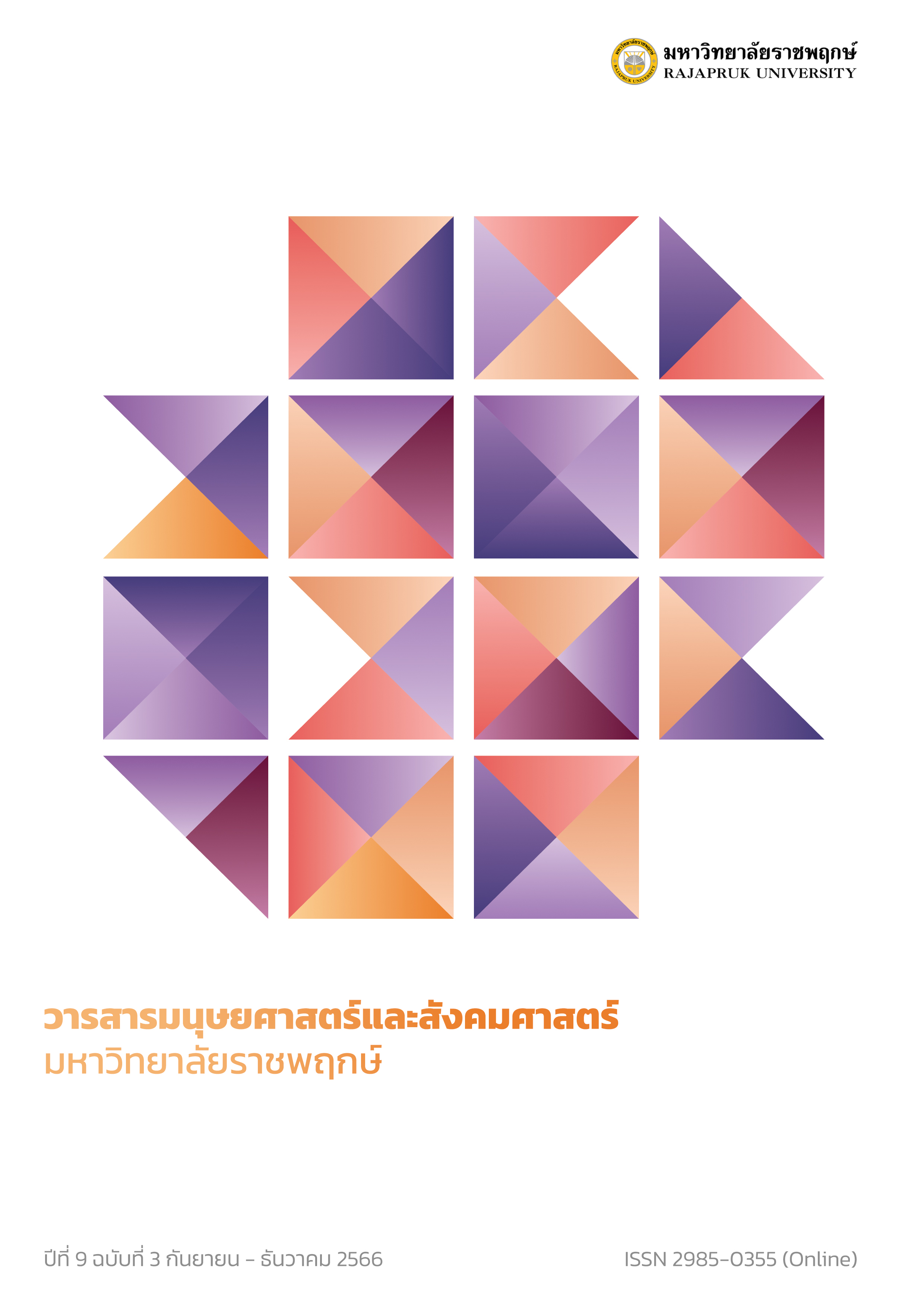The Development of Supplementary Exercises for Inferential Statistics of Undergraduates Students in Christian University
Main Article Content
Abstract
The purposes of this research were to 1) study the learning achievement of the students before and after the study with the Supplementary Exercises for Inferential Statistics, and 2) study the students' satisfaction toward learning by using the Supplementary Exercises for Inferential Statistics. The instruments for the research were the Supplementary Exercises for Inferential Statistics, the 2 parallel sets of Learning Achievement Test before and after learning by using the Supplementary Exercises for Inferential Statistics, and the Student Satisfaction Questionnaire on the Supplementary Exercises for Inferential Statistics. Data were collected from a sample of 30 first-year students who enrolled in the TSTA3102 Principle of Statistics course by using convenience sampling. The scores of the 2 parallel sets of Learning Achievement Test before and after learning by using the Supplementary Exercises for Inferential Statistics were analyzed by using the nonparametric Wilcoxon matched-pairs signed rank test and the data from the Student Satisfaction Questionnaire on the Supplementary Exercises for Inferential Statistics were analyzed by using mean and standard deviation.
The research results found that: 1) the learners' scores from taking the learning achievement test after learning by using the Supplementary Exercises for Inferential Statistics were significantly higher than before (z=-4.79, p=0.00) at the level of .05, and 2) the learners' satisfaction on the Supplementary Exercises for Inferential Statistics overall was at a high level.
Article Details
References
กัลยา วานิชย์บัญชา. (2560). หลักสถิติ. กรุงเทพฯ: สำนักพิมพ์แห่งจุฬาลงกรณ์มหาวิทยาลัย.
ชฎาพร ภูกองชัย. (2561). การพัฒนาแบบฝึกทักษะคณิตศาสตร์ เรื่อง อัตราส่วนและร้อยละสำหรับนักเรียนชั้นมัธยมศึกษาปีที่ 2. วารสารโครงงานวิทยาการคอมพิวเตอร์และเทคโนโลยีสารสนเทศ, 4(2): 93-101.
ชัยยงค์ พรหมวงศ์. (2556). การทดสอบประสิทธิภาพสื่อหรือชุดการสอน. วารสารศิลปากรศึกษาศาสตร์วิจัย, 5(1): 5-20.
นงเยาว์ ทองกำเนิด. (2558). การพัฒนาแบบฝึกทักษะการอ่านจับใจความภาษาไทยสำหรับนักเรียนชั้นประถมศึกษาปีที่ 3 อำเภอเขาชะเมา จังหวัดระยอง. วิทยานิพนธ์ การศึกษามหาบัณฑิต มหาวิทยาลัยบูรพา.
บุญชม ศรีสะอาด. (2553). วิจัยเบื้องต้น. พิมพ์ครั้งที่ 8. กรุงเทพฯ: สุวิริยาสาส์น.
ปราณี หลำเบ็ญสะ. (2561). การวัดและประเมินผลการศึกษา. กรุงเทพ: สหมิตรพัฒนาการพิมพ์ (1992).
ปรียารัตน์ นาคสุวรรณ์. (2554). สถิติศาสตร์ไม่อิงพารามิเตอร์. ชลบุรี: ภาควิชาคณิตศาสตร์ คณะวิทยาศาสตร์ มหาวิทยาลัยบูรพา.
ปิยฉัตร ศรีสุราช. (2561). การพัฒนาแบบฝึกทักษะการอ่านจับใจความภาษาไทยสำหรับนักเรียนชั้นประถมศึกษาปีที่ 3 โรงเรียนชุมชนบ้านเขาสมิง จังหวัดตราด. วิทยานิพนธ์ ครุศาสตรมหาบัณฑิต มหาวิทยาลัยราชภัฏรำไพพรรณี.
ยุทธ ไกยวรรณ์. (2562). หลักสถิติวิจัยและการใช้โปรแกรม. กรุงเทพฯ: สำนักพิมพ์แห่งจุฬาลงกรณ์มหาวิทยาลัย.
รุ่งกานต์ ใจวงค์ยะ. (2557). สภาพปัญหาการจัดการเรียนการสอน รายวิชา สต 301 หลักสถิติ. รายงานการวิจัย มหาวิทยาลัยแม่โจ้.
วชิราภรณ์ ชำนิ. (2555). ผลของการใช้แบบฝึกที่มีต่อความสามารถในการแก้ปัญหาทางคณิตศาสตร์ เรื่องโจทย์สมการเชิงเส้นตัวแปรเดียว ของนักเรียนระดับชั้นมัธยมศึกษาปีที่ 1. สารนิพนธ์ การศึกษามหาบัณฑิต มหาวิทยาลัยศรีนครินทรวิโรฒ.
สมพงษ์ พันธุรัตน์. (ม.ป.ป.). สถิติที่ใช้ในการวิจัย. ค้นเมื่อวันที่ 8 มิถุนายน 2565, จาก https://home.kku.ac.th/sompo_pu/spweb/research/703.ppt.
สมพล พวงสั้น. (2559). การพัฒนาแบบฝึกทักษะร่วมกับโปรแกรมจีโอจีบร้าสำหรับการหาปริพันธ์. วารสาร Veridian E-Journal สาขาวิทยาศาสตร์ และเทคโนโลยี, 3(2): 16-26.
อนุรักษ์ เร่งรัด. (2557). การพัฒนาแบบฝึกทักษะ วิชาคณิตศาสตร์ เรื่องการประยุกต์ 1 โดยใช้การจัดการเรียนรู้แบบปัญหาเป็นฐาน เพื่อส่งเสริมความสามารถในการแก้ปัญหา สำหรับนักเรียนชั้นมัธยมศึกษาปีที่ 1. วิทยานิพนธ์ ศึกษาศาสตรมหาบัณฑิต มหาวิทยาลัยศิลปากร.
Bloom, B.S. (1956). Taxonomy of Educational Objectives, Handbook I: The Cognitive Domain. New York: David McKay Co Inc.
Hergenhahn, B.R. & Olsen, M.H. (1993). An introduction to theories of learning. 4th ed. Englewood Cliffs, New Jersey: Prentice Hall.
Maslow, Abraham Harold. (1970). Motivation and Personality. New York: Harper and Row.


